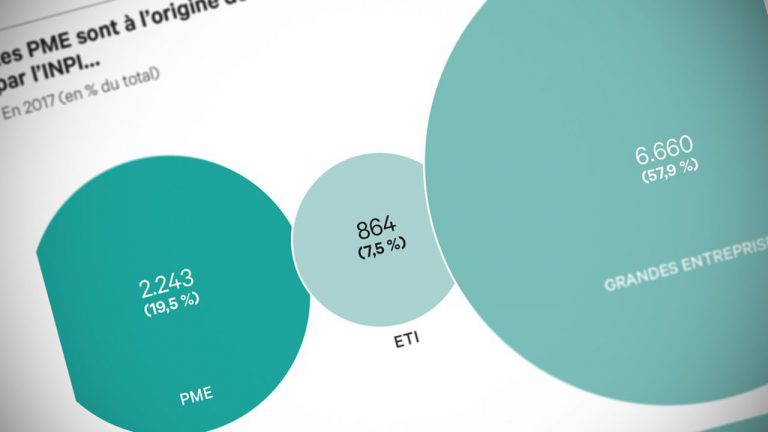
PATENTS : THE PACTE LAW INCITES SMEs TO OBTAIN MORE PROTECTION
Thierry Caen gives an interview on the PACTE law for the promotion of company growth and transformation, and its impact on SMEs. Published in the newspaper Les Echos.
Provisional patents, broadened certificates of utility, an end to challenges before the courts and more. To encourage small and medium-sized enterprises to get started with intellectual property protection, the Pacte law has provided new measures. A review of the main measures, the effectiveness of which has already been criticized by some. Barely a quarter of patent applications published in France come from SMEs. This Figure, which has remained at about 20 % for years, has failed to take off.
“French small and medium-sized companies do not have a culture of intellectual property, the secret of which is overdue”, regrets Pascal Faure, director general of the French IP Office (INPI).
It was in order to break this vicious circle that the Pacte law, promulgated on 22 May and published in the “Official Journal” the following day, attacked this defect. The idea is to make it possible to progressively climb the ladder of intellectual property protection. Pascal Faure goes as far as to say, “This series of measures is unprecedented. Changes of such magnitude have not taken place since 1951“. Although the professional body known as the National Company of Intellectual Property Attorneys (CNCPI) supported the law, there are some dissenting voices. “There is a risk that the law will add constraints and make a patent more difficult to obtain, leading to the opposite effect to that sought,” contends Thierry Caen, intellectual property attorney at the firm Santarelli.
More flexible measures
To make obtaining a patent cheaper and to enable SMEs to become acquainted with IP, the Pacte law creates a first rung of the ladder in the form of the provisional patent application limited to one year. This application is accessible, its content is simplified and it costs 26 euros for a large company, half that for an SME. The advantage is that it gives time to test the market and find financial partners, and the patent application may be progressively added to, while keeping the priority date given by the provisional patent. It was inspired by the United States provisional patent application, or PPA.
Another measure, the certificate of utility, for inventions with a short lifespan, such as new technology products for example, has been extended from 6 to 10 years to harmonize with practice in other countries (as opposed to 20 years for a patent).
A new advantage is that it can be converted into a patent application, which was not possible previously. Thanks to the ease with which it can be obtained, the State hopes to boost numbers, which have currently stagnated at around 300 a year, in contrast to several thousand in Germany. That said, it is not valid in another country.
A stronger patent
The substantive examination procedure for patents will be strengthened, with the criterion of inventiveness being taken into account. Here too, the example has been followed of other countries such as Germany, Japan, South Korea and the United States. Because it is easier to obtain, it is considered weaker when challenged before a court. “This is essentially the perception outside France, since, out of 100 patent applications, we actually grant only 65“, says the INPI in defense. In reality, however, the public body can refuse a patent application solely on the criterion of “clear” lack of novelty. Above all, this image is detrimental to the “confidence” placed in the French patent. One fear of opponents to the law is that attorney firms will increase their fees based on this new expertise.
A variable-geometry calendar
The different measures of the Pacte law will not be implemented at the same time. In September 2019, modifications should come into effect governing the certificate of utility, the provisional patent application and the creation of new types of trademarks (audio, animated, etc.).
In January 2020, it will be the turn of oppositions to patents and trademarks before the INPI. Lastly, in mid-2020, inventive step in the examination of patents will come into force.
Avoiding having to appear in court
Opposition proceedings against a patent will in future be conducted before the INPI. Previously, a petition for revocation of a patent held invalid had to be made before the courts. A clear brake to intellectual property protection. “SMEs tended not to file patent applications for fear of being attacked by a competitor and of having to spend considerable sums to defend themselves in court“, explains Pascal Faure. This is the measure receiving the greatest acclamation. As part of the skepticism over the effectiveness of these measures, many cite the resources allocated to the INPI. This public body has announced a strengthening in the number of examiners from 80 to 120. However, this is will take place without a change in the overall size of the workforce – 730 staff – based on electronic procedures and restructuring.
